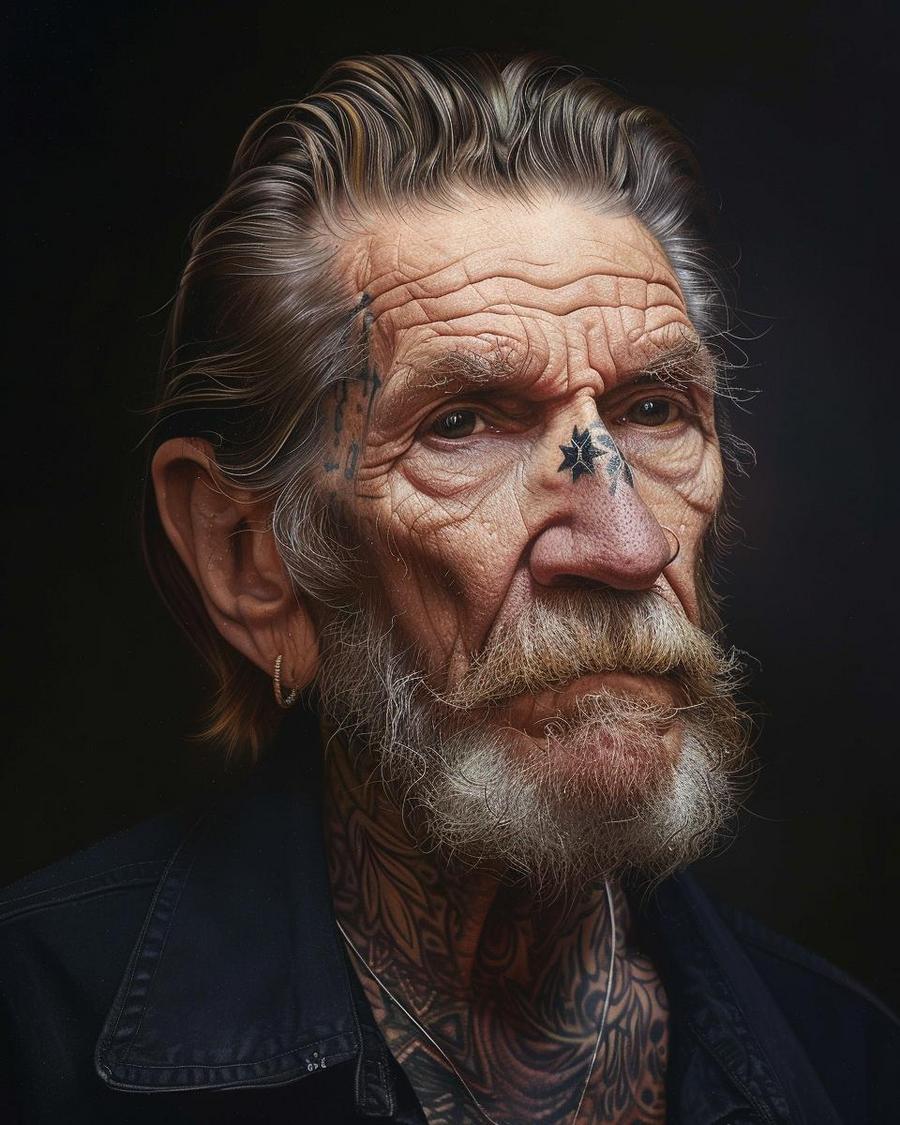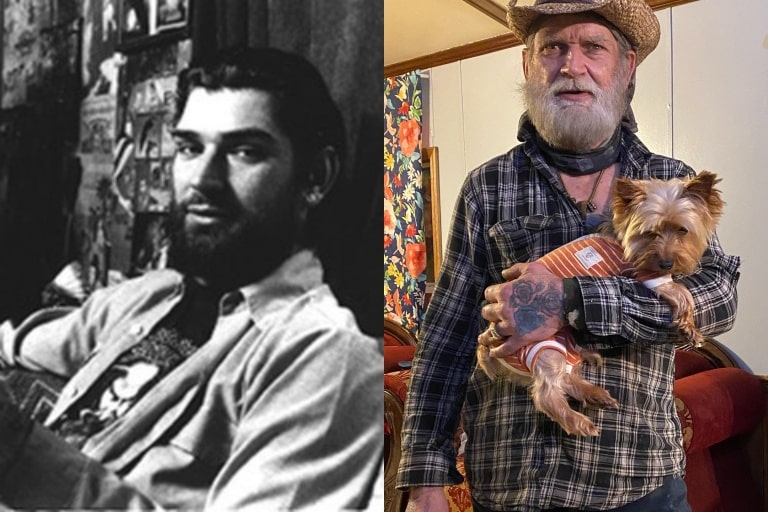Jesco White: The Dancing Outlaw's Enduring Appalachian Story
Have you ever heard a story so unique, so deeply rooted in a place, that it just stays with you? Well, that's exactly what you get with Jesco White, a figure known to many as "the dancing outlaw." His life, you know, is a really vivid picture of Appalachian culture, full of rhythm and a bit of hardship too. He's not just a dancer; he's a true American folk artist and entertainer, and his journey, honestly, captures the spirit of a whole region.
Born on July 30, 1956, in a small community called Bandytown, West Virginia, near the Appalachian Mountains of Boone County, Jesco's path was, in a way, set very early on. He picked up dancing at the incredibly young age of five, being taught by his own father, D-Ray White. This wasn't just any dancing; it was mountain tap dancing, a style that, as a matter of fact, runs deep in their family.
Jesco's story, you might find, goes beyond just his amazing dance moves. He became widely known as the main subject of several American documentary films. These films, you see, really show his deep desire to follow in his father's footsteps, all while dealing with some very tough personal battles, like depression, drug addiction, and alcoholism. It's a powerful and, honestly, very human tale that many people connect with.
Table of Contents
- Who Is Jesco White?
- Early Life and the Roots of a Dancing Tradition
- The Dancing Outlaw: Documentaries and Notoriety
- The Artistry of Mountain Tap
- A Look at His Personal Struggles and Resilience
- Jesco White: An Appalachian Legend
- Frequently Asked Questions About Jesco White
- The Lasting Impact of a Unique Figure
Who Is Jesco White?
Jesco White, very often called "the dancing outlaw," is an American folk dancer and entertainer. He was born on July 30, 1956, in Bandytown, West Virginia. He's widely recognized for his unique mountain tap dancing style and, you know, for being the subject of several documentaries that explore his life.
Personal Details and Bio Data
| Detail | Information |
|---|---|
| Full Name | Jesco White |
| Also Known As | The Dancing Outlaw |
| Date of Birth | July 30, 1956 |
| Place of Birth | Bandytown, West Virginia, USA |
| Occupation | American Folk Dancer, Entertainer |
| Known For | Mountain Tap Dancing, Subject of Documentaries |
| Father's Name | D-Ray White (Donald Ray White) |
| Cultural Status | American Cult Figure, Appalachian Legend |
Early Life and the Roots of a Dancing Tradition
Jesco White's story, honestly, begins in the heart of West Virginia. He was born on July 30, 1956, in Bandytown, a small community nestled near the Appalachian Mountains in Boone County. This area, you know, is rich with its own traditions and ways of life, and Jesco's family was, in a way, at the center of a very special one.
His father, D-Ray White, was, as a matter of fact, one of the greatest mountain tap dancers in the United States. It was from this remarkable parent that Jesco, you know, learned his first steps. He started dancing at the incredibly young age of five, soaking up the rhythms and moves that were, apparently, passed down through generations.
The dancing shoes themselves were, you know, quite literally handed down to him from his father. This act, in some respects, symbolized the passing of a legacy. Jesco's style of dancing, which he practices with dedication, is a subtle yet powerful expression of this inherited tradition. It's not just about steps; it's about carrying on a piece of history, really.
The Dancing Outlaw: Documentaries and Notoriety
Jesco White gained a lot of attention and, you know, became a cult figure through a series of American documentary films. These films, you see, offered viewers a candid look into his life, showing his aspirations to follow in his famous father's footsteps. The first of these, a rather hard-to-find 1991 PBS documentary called "The Dancing Outlaw," really put him on the map.
These documentaries, as a matter of fact, don't just focus on his dancing. They also explore the very real struggles Jesco has faced. They show him dealing with things like depression, drug addiction, and alcoholism, providing a raw and, you know, honest portrayal of his challenges. It's this combination of artistic talent and personal struggle that, honestly, makes his story so compelling.
The films, in a way, painted a picture of a man trying to honor his family's legacy while battling his own demons. This narrative, you know, resonated with many people, turning Jesco into an Appalachian legend. His notoriety grew, and he became, in some respects, a symbol of resilience in the face of adversity, quite literally.
The Artistry of Mountain Tap
Mountain tap dancing, as practiced by Jesco White, is a distinct and, you know, very traditional form of American folk dance. It's a style that, apparently, emphasizes rhythmic footwork and a connection to the Appalachian landscape. Jesco's father, D-Ray White, was a master of this form, and he taught Jesco the intricacies from a very young age.
The shoes Jesco uses, as I was saying, were passed down from his father. This isn't just a sentimental detail; it connects him directly to a lineage of dancers. His dancing, you know, is a subtle yet powerful expression. It carries the weight of history and the spirit of a region, making it much more than just a performance.
Jesco's performances, you know, are often seen as encapsulating the spirit of Appalachian culture. They reflect the resilience, the joy, and the struggles of the people who call that region home. It's a form of expression that, as a matter of fact, speaks volumes without needing many words, just a little bit of rhythm and movement.
A Look at His Personal Struggles and Resilience
While Jesco White is celebrated for his dancing, his life story is also marked by significant personal challenges. The documentaries that brought him to public attention, you know, openly discuss his battles with depression, drug addiction, and alcoholism. These struggles are a very real part of his narrative, and they add a layer of depth to his public persona.
Despite these very tough obstacles, Jesco has, in a way, continued to pursue his passion for dancing. His desire to follow in his father's footsteps, you know, appears to be a powerful driving force. This resilience, honestly, is a key aspect of why his story resonates so deeply with many people.
His journey, you know, serves as a reminder that even those who achieve a certain level of fame or notoriety can face profound personal difficulties. Yet, through it all, his connection to his art and his heritage has, apparently, remained strong, a bit like a guiding light.
Jesco White: An Appalachian Legend
Jesco White is often referred to as "Appalachian royalty" by some, and he's widely known as "the dancing outlaw." This title, you know, really captures the essence of his unique place in American culture. He's not just a dancer; he's a cult figure, a person whose life and art have become deeply intertwined with the identity of the Appalachian region.
Born in 1956 in Boone County, West Virginia, Jesco's life story is, as a matter of fact, a powerful narrative about heritage, struggle, and artistic expression. He embodies a certain spirit that many associate with the mountains—a spirit of independence, resilience, and a deep connection to tradition. His story, you know, continues to be told and retold, solidifying his status as a true legend.
His enduring appeal, honestly, lies in his authenticity. He presents a raw, unfiltered look at a life lived on the fringes, yet filled with a profound artistic purpose. This makes him, you know, a fascinating subject for anyone interested in American folk art or, in some respects, the human condition itself.
Frequently Asked Questions About Jesco White
What is Jesco White best known for?
Jesco White is, as a matter of fact, best known as "the dancing outlaw." He's an American folk dancer and entertainer, particularly recognized for his unique mountain tap dancing style. He also gained widespread notoriety as the subject of several American documentary films that, you know, detail his life and struggles.
When was Jesco White born?
Jesco White was born on July 30, 1956. He came into the world in Bandytown, West Virginia, a small community, you know, located near the Appalachian Mountains of Boone County.
Who taught Jesco White how to dance?
Jesco White started dancing at the very young age of five. He was, as a matter of fact, taught by his father, D-Ray White, who was widely considered one of the greatest mountain tap dancers in the United States. Jesco, you know, took the shoes that were handed down to him from his father, continuing a family tradition.
The Lasting Impact of a Unique Figure
Jesco White's story, you know, continues to capture the imagination of many people. His life, as seen in the documentaries and heard through word of mouth, offers a compelling look at a specific slice of American life. He represents the raw talent and the very real struggles that can exist within unique cultural traditions.
His legacy, in a way, is a testament to the power of folk art and the enduring spirit of individuals who, despite immense challenges, continue to express themselves. He's more than just a dancer; he's a living piece of Appalachian history, really. His tale, honestly, reminds us of the rich and varied tapestry of American experiences.
To learn more about Jesco White and the vibrant culture he represents, you might want to explore the documentaries that brought his story to light. You can also, you know, find out more about the broader world of Appalachian folk art by visiting this page. It's a journey worth taking, truly, into a fascinating part of our country's heritage. For more insights into the cultural significance of Appalachian dance, you could also check out resources like the National Endowment for the Arts, which often covers regional traditions.

Jesco White (right) and a pal , in the mid 90’s, when he was known as

Jesco White Net Worth: Explore the Dancer's Fortune!

Jesco White: From "The Dancing Outlaw" to "The Wild and Wonderful